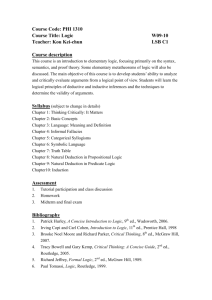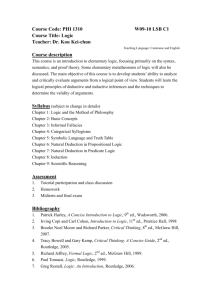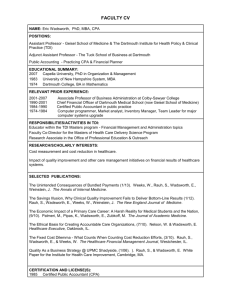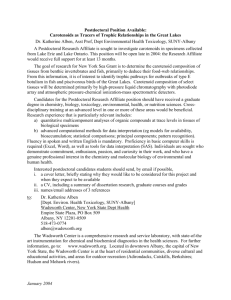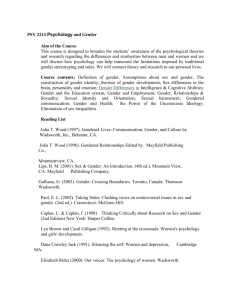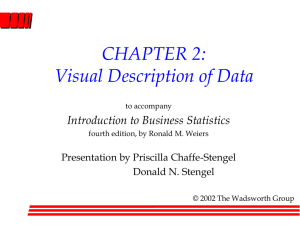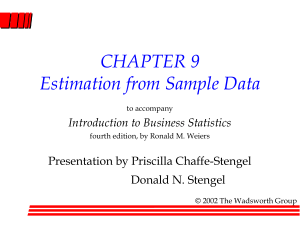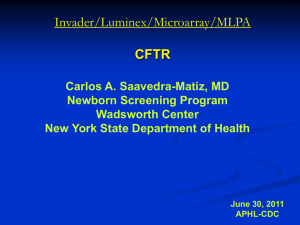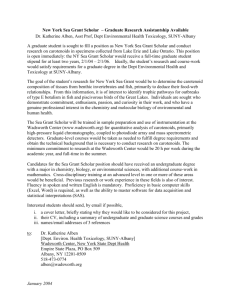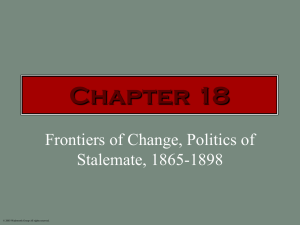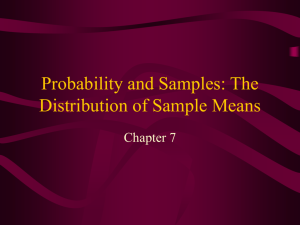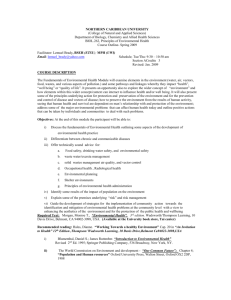ppt file
advertisement
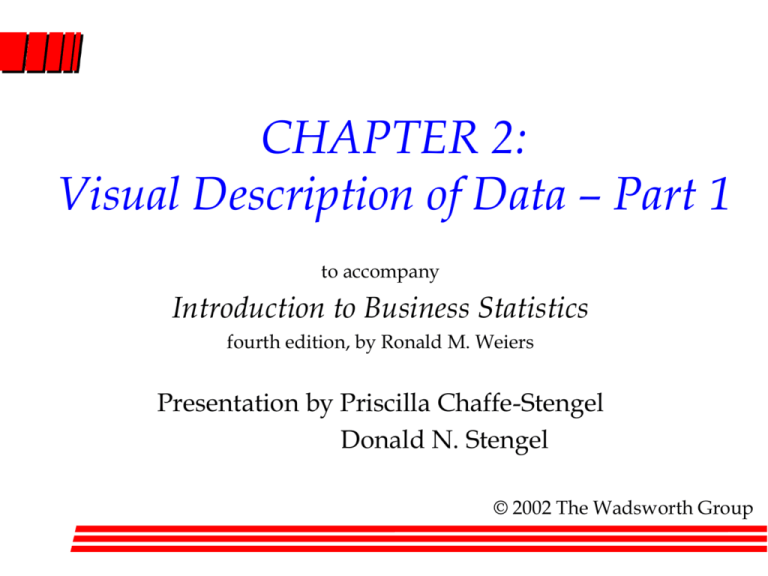
CHAPTER 2: Visual Description of Data – Part 1 to accompany Introduction to Business Statistics fourth edition, by Ronald M. Weiers Presentation by Priscilla Chaffe-Stengel Donald N. Stengel © 2002 The Wadsworth Group Chapter 2 - Learning Objectives • Convert raw data into a data array. • Construct: – a frequency distribution. – a relative frequency distribution. – a cumulative relative frequency distribution. • Construct a stem-and-leaf diagram. • Visually represent data by using graphs and charts. © 2002 The Wadsworth Group Chapter 2 - Key Terms • Data array – An orderly presentation of data in either ascending or descending numerical order. • Frequency Distribution – A table that represents the data in classes and that shows the number of observations in each class. © 2002 The Wadsworth Group Chapter 2 - Key Terms • Frequency Distribution – – – – – Class - The category Frequency - Number in each class Class limits - Boundaries for each class Class interval - Width of each class Class mark - Midpoint of each class © 2002 The Wadsworth Group Sturges’ rule • How to set the approximate number of classes to begin constructing a frequency distribution. k 1 3.322 (log n ) 10 where k = approximate number of classes to use and n = the number of observations in the data set . © 2002 The Wadsworth Group Alternatives to Sturges’ Rule • Use the square root of n (the number of observations) as the number of cells – Simpler to use for n < 50 – Poor for larger values of n • c Use the formula: n = 2 where c (the power of 2) is the number of cells to use. This method gives the same result as Sturge’s rule minus 1. How to Construct a Frequency Distribution 1. Number of classes Choose an approximate number of classes for your data. Sturges’ rule can help. 2. Estimate the class interval Divide the approximate number of classes (from Step 1) into the range of your data to find the approximate class interval, where the range is defined as the largest data value minus the smallest data value. 3. Determine the class interval Round the estimate (from Step 2) to a convenient value. © 2002 The Wadsworth Group How to Construct a Frequency Distribution, cont. 4. Lower Class Limit Determine the lower class limit for the first class by selecting a convenient number that is smaller than the lowest data value. 5. Class Limits Determine the other class limits by repeatedly adding the class width (from Step 2) to the prior class limit, starting with the lower class limit (from Step 3). 6. Define the classes Use the sequence of class limits to define the classes. © 2002 The Wadsworth Group Converting to a Relative Frequency Distribution 1. Retain the same classes defined in the frequency distribution. 2. Sum the total number of observations across all classes of the frequency distribution. 3. Divide the frequency for each class by the total number of observations, forming the percentage of data values in each class. © 2002 The Wadsworth Group Forming a Cumulative Relative Frequency Distribution 1. List the number of observations in the lowest class. 2. Add the frequency of the lowest class to the frequency of the second class. Record that cumulative sum for the second class. 3. Continue to add the prior cumulative sum to the frequency for that class, so that the cumulative sum for the final class is the total number of observations in the data set. © 2002 The Wadsworth Group Forming a Cumulative Relative Frequency Distribution, cont. 4. Divide the accumulated frequencies for each class by the total number of observations -- giving you the percent of all observations that occurred up to an including that class. • An Alternative: Accrue the relative frequencies for each class instead of the raw frequencies. Then you don’t have to divide by the total to get percentages. © 2002 The Wadsworth Group
